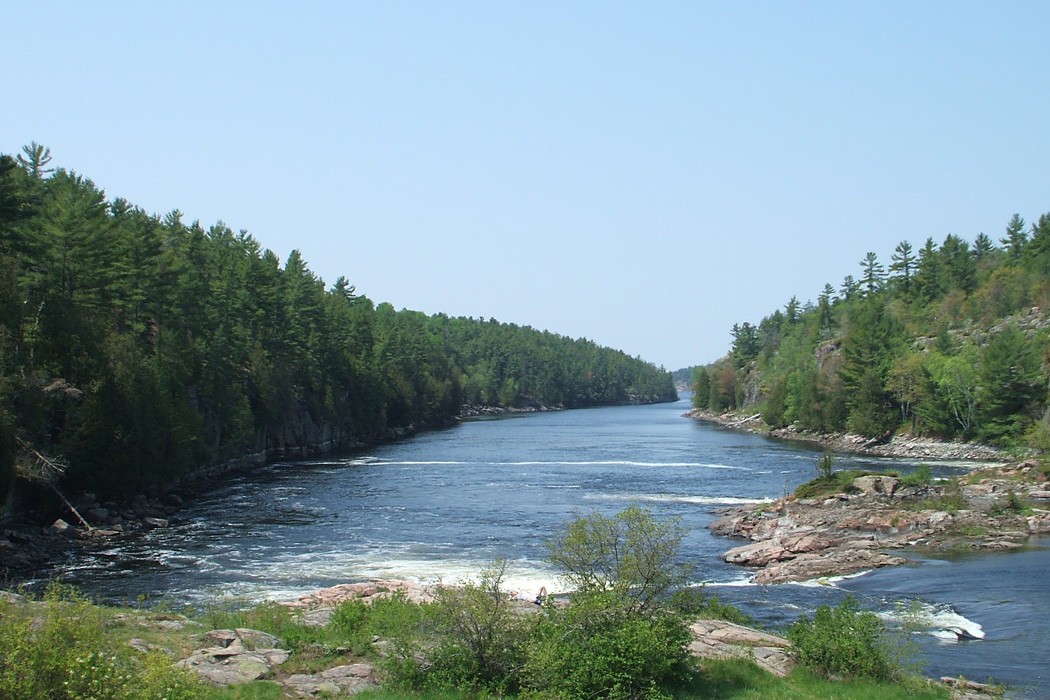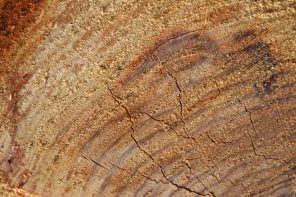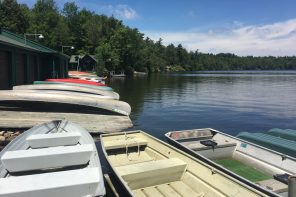It is a place of richness, and wonderful diversity. The first nations that lived here knew of that diversity and rejoiced in it. And they recognized its unique challenge. To live in the The Land Between is to know two worlds, to know that there is a meeting place of plants, animals and species, and to have a greater diversity of creatures to care for. Such a call to care was taken seriously: the Haudenashaunee people took responsibility for looking after the soil and the trees; the Anishinaabeg cared for the water and the rocks.
The Land Between is known as an ecotone: it has elements of two ecosystems; it is an area of transition. It is, you might say, a place on the margins. And like all places on the margins, the co-mingling of people, of species and of cultures makes for creativity and fruitful diversity. That creativity and fruitful diversity was recognized by those who first lived here and stewarded this land.
Oddly enough, the margins haven’t always been viewed in this way. When the first settlers came, they tried to settle The Land Between in the same ways that the land to the south had been settled. But the farmland wasn’t as fertile for farming as the St. Lawrence Lowlands. With rock closer to the surface, the land was more fragile, easier to damage. There were more animals for food, but there were also more predators. The settlers didn’t know the secrets of the land between. The diversity was overwhelming.
The ecosystem, with its variety of lakes, rivers, exposed rock, shallow soils and rich marshes required knowledge that the settlers didn’t have. They didn’t know how to look after the soil and the trees. Or the water and the rocks. They didn’t see rich diversity and potential. They saw a diversity that led to confusion.
The margins: a place of fruitfulness and rich potential? Or chaos and confusion? It was a question that those who encountered Jesus grappled with at some length. You see, Jesus seemed to have a taste for the margins, the places where worlds overlapped, cultures overlapped, people overlapped. While he went to a few places at the center such as Capernaum, Jericho, and Jerusalem, he preferred to spend his time in the small villages, away from the centers of power. He transgressed the borders, traveling into Gentile areas where Jews generally didn’t go, and stopping in Samaria, the land the Jews considered unclean.
But it wasn’t just that Jesus liked the marginal places, he had a thing for people at margins, too: tax collectors, those Jews who lived a marginal existence of working for the Romans; the prostitutes, who lived just outside the pale of respectability; the sick, thought to be punished by God; Samaritans, not acceptable to the Jews; Gentiles, well beyond the margins. Add the poor and the number of women who followed him, along with the rustic fishermen from small villages, and it is easy to see that Jesus had no sense of the stable, secure center, no appetite for what was acceptable, and no desire, apparently, for what was safe. Instead, he seemed to think that the prostitutes could teach us about gratitude, Samaritans could not only proclaim the gospel but also teach us about compassion, and that tax collectors could demonstrate true repentance. Jesus rejoiced that a Syro-Phoenician woman (a Canaanite!) could show everyone what true faith was, and so could a centurion—a leader in the Roman army. Jesus seemed to see all these people at the margins in a place of creative diversity, a place where learning and fruitfulness could take place, a place of potential.
And, Jesus tells us, the margins are a place of fragility. It is the place where we find the ones who are voiceless, the meek, those who mourn now, and long for justice. The marginal places are where we find the poor in spirit. And yet, it is these fragile ones who will inherit kingdom and the earth. It is the fragile ones who will be comforted, for they are the children of God. If it weren’t for these people at the margins, Jesus tells us, we wouldn’t have a clue about what the kingdom is like. These are the ones who know something about justice, repentance, faith, forgiveness, and compassion. They teach us what the story is about.
Of course, not everyone could see what Jesus could see. For the religious leaders, these marginal people, drawn from the marginal places were a hotbed of unfaithfulness, chaos and confusion. The very fragility of this marginal community is what made it undesirable to the religious leaders. For fragility needs to be nurtured, fragility means that we need to take the time to tend, and to listen. Fragility means that we need to shut up long enough to hear the voice and the needs of the wounded person, so that we can care for them appropriately. Living with those at the margins requires attentiveness and sacrifice. As Jesus points out to his followers on the way to Jerusalem, being a leader at the margins requires a willingness to serve.
For those of us who are not used to such listening, this is a hard lesson to learn. We have lost the knowledge of our place: rich diversity requires a lot of listening, a lot of attention, a lot of learning of plants and animals and insects. We begin in so much ignorance. We are more likely to uproot lambs quarters, amaranth (a.k.a. pigweed), burdock, and motherwort than rejoice in their abilities to heal and feed us. We are more likely to try to destroy insects than attract them as pollinators and food for the birds we love to watch. We are more likely to see fruit and nut trees as a nuisance than as food for birds and animals and also ourselves. In our destruction of the things that we see as creating “mess” and “untidiness” we slowly—and sometimes quickly—chip away at the fragile land that supports our lives.
So the question for our places, like that of so much of our life, is how do we bring healing? How do we bring new life to the places we are destroying and have destroyed? Perhaps we can take a clue from Jesus and learn from the margins. Look at your place. Look at the margins, at the spaces where the plants thrive and the insects gather. What are those plants and insects? How do they create life? How were they used for nourishment by the people that were first here? What can they teach us about the place that we now inhabit? Listen and learn. And once we have begun to listen, then we can nurture the margins, for it is in those places of creative diversity that good fruit begins to grow.
Image: Hermann Luyken [GFDL, CC-BY-SA-3.0], via Wikimedia Commons




